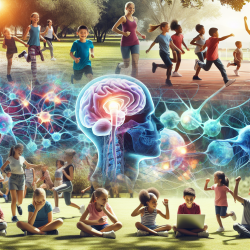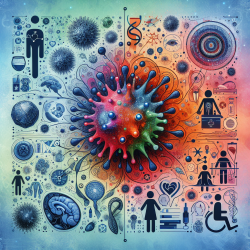Introduction
In the realm of child development, the interplay between physical exercise and neurovascular health is gaining significant attention. A recent study titled Neurovascular coupling and cerebrovascular hemodynamics are modified by exercise training status at different stages of maturation during youth sheds light on how exercise influences neurovascular coupling (NVC) and cerebrovascular hemodynamics during critical developmental stages in youth.
The Importance of Exercise in Youth Development
The study highlights that exercise training during childhood can elevate regional cerebral blood velocities and potentially enhance neurovascular coupling, particularly before the onset of puberty. This is a crucial finding for practitioners working with children, as it underscores the importance of incorporating regular physical activity into their routines.
Neurovascular coupling, the process by which cerebral blood flow is matched to neural activity, is essential for supporting cognitive and neurocognitive health. The study found that exercise-trained youth demonstrated higher resting middle cerebral artery velocities, suggesting that physical activity may confer long-term benefits in cerebrovascular function.
Implementing Research Findings in Practice
For practitioners, these findings offer a valuable opportunity to enhance their therapeutic approaches. Here are some practical steps to consider:
- Encourage Regular Physical Activity: Integrate structured exercise programs into therapy sessions for children, emphasizing endurance activities that are age-appropriate and enjoyable.
- Monitor Developmental Stages: Pay attention to the different stages of maturation in youth, as the benefits of exercise on neurovascular health are more pronounced before puberty.
- Collaborate with Schools: Work with educational institutions to promote physical education and extracurricular sports, ensuring that children have ample opportunities for physical activity.
- Educate Parents and Guardians: Provide resources and guidance to parents about the importance of exercise for their children's neurovascular and cognitive development.
Encouraging Further Research
While the study provides compelling evidence of the benefits of exercise on neurovascular health, there are still areas that require further exploration. Practitioners are encouraged to engage in or support research initiatives that investigate:
- The long-term effects of exercise on neurovascular coupling beyond adolescence.
- The impact of different types of physical activities on cerebral blood flow and cognitive function.
- The role of sex-specific differences in neurovascular responses to exercise during maturation.
Conclusion
Exercise training during childhood represents a unique opportunity for practitioners to influence neurovascular development positively. By implementing the findings from this study, practitioners can help optimize cerebrovascular health in youth, potentially conferring cognitive benefits that extend into adulthood.
To read the original research paper, please follow this link: Neurovascular coupling and cerebrovascular hemodynamics are modified by exercise training status at different stages of maturation during youth.










